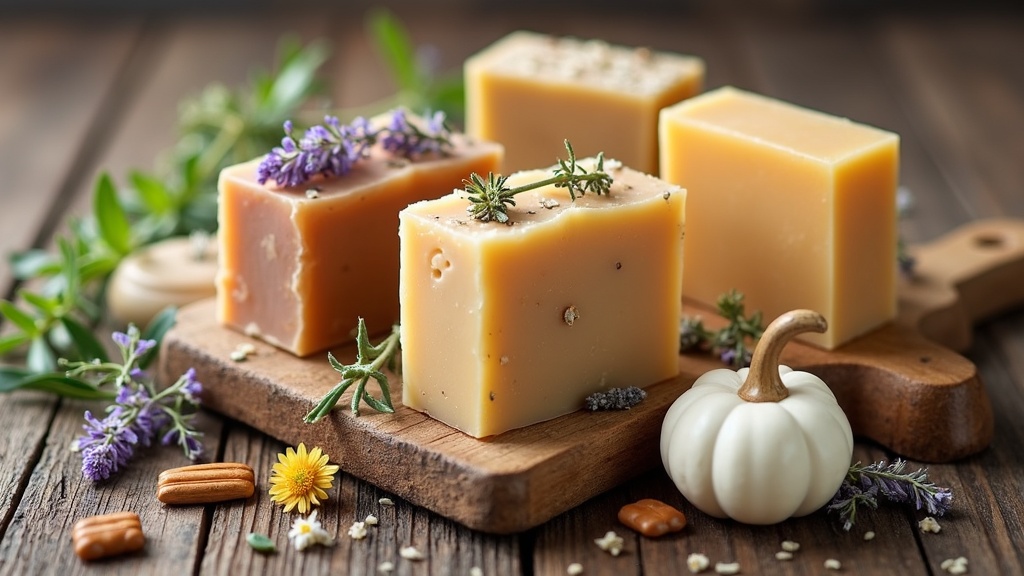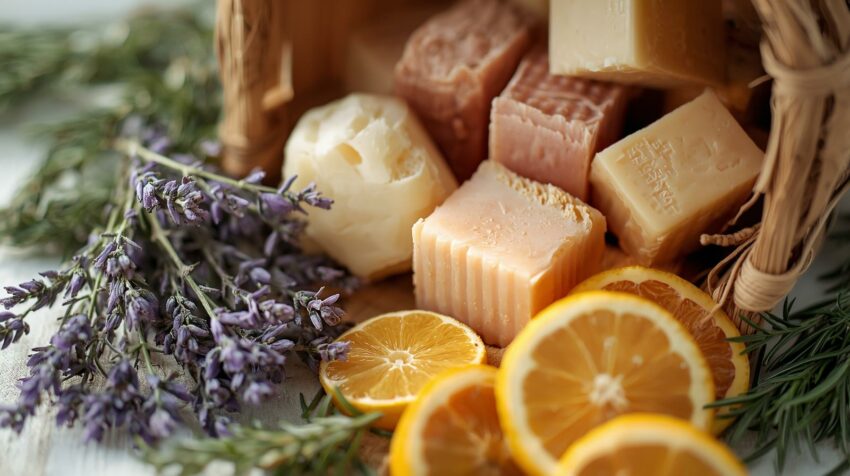Ecofriendly soap making is a pretty great way to care for yourself while also keeping our planet healthier. If you’re anything like me, you might have wondered if you can clean up your skincare routine and still get squeaky clean hands. The good news is: you totally can! Making soap the natural way is much easier than most people think, and every step you take to go green with your craft makes a real difference. Here, I’ll guide you through what makes soap ecofriendly, some interesting history, and tips I’ve found really handy for making natural soap at home.

What Makes Soap Environmentally Friendly?
Choosing an environmentally friendly soap isn’t just about having natural ingredients. There are a few things that really matter when picking or making a soap that’s gentle on the earth:
- Ingredients: 100% plantbased oils, herbs, and natural colorants break down easily and don’t pollute water systems.
- No synthetic additives: Fragrances, colorants, and preservatives can leave chemicals behind in our water.
- Zerowaste packaging: Wrapping your soap in paper or sold packagefree keeps plastic out of landfills.
- Crueltyfree and vegan options: No animal testing or animal fats reduces environmental stress and supports ethical choices.
The most environmentally friendly soaps are solid bars made with organic plant oils like olive, coconut, or sunflower. Bar soap usually comes with much less packaging than liquid soap (which often comes in plastic), and solid bars tend to last longer, which means less waste. Castile soap, made mainly from olive oil, is one of the best options around for people who want something natural, biodegradable, and easy on the ecosystem.
Ecofriendly Soap Making: How to Get Started
Making your own green soap at home might sound a bit intimidating, but it’s actually very doable once you learn the basics. Here’s what I always keep in mind:
- Pick simple, natural ingredients: Choose plantbased oils (olive oil, coconut oil, sunflower oil), lye (sodium hydroxide; yes, even eco soap needs it), and addins like herbs, flowers, or essential oils for scent.
- Avoid palm oil or use sustainable palm : Palm oil farming is tough on rainforests and wildlife.
- Work safely: Lye is super important in soap making but can be dangerous if not handled carefully. Always wear gloves and goggles, and mix lye into water, not the other way around, to stay safe.
- Use reusable or compostable molds: Silicone or wooden molds can be used again and again.
The process most people use is called “cold process” soap making. Here’s a general outline of what I do:
- Measure oils and melt them together.
- Carefully mix lye with water (use gloves and goggles in a well ventilated area).
- Combine the oils and lye once both are at the right temperature (usually around 100°F/38°C).
- Blend together until “trace,” where it thickens like pudding and holds a line if you drip some over the top.
- Add any botanicals or essential oils.
- Pour into molds and let sit for 24 to 48 hours.
- Unmold and let cure for 4 to 6 weeks in a dry space so the bar gets milder and lasts longer.
It’s honestly a super fun process, and you get a product that’s truly personalized and wastefree. There are lots of recipes out there, but sticking with pure, plantbased ones is a safe bet for people and the planet.
Native American Soap: Rooted in Nature
Long before commercial soap, Native Americans were skillfully making their own cleansers from plants. This knowledge was passed down over generations and is super inspiring if you’re interested in truly natural ways to clean and care for yourself. Many Native American tribes used plants with natural saponins (plant chemicals that produce a lather) for washing:
- Yucca Root: The root was mashed or ground and used as a natural soap for hair, skin, and clothing.
- Soapwort: This is a wildflower found in many parts of North America. The leaves and roots foam up when mashed with water, making a gentle wash.
- Buffalo Gourd: The roots and fruit could be pounded and mixed with water for cleansing.
It’s pretty incredible to realize that basic household cleaning was done using only plants growing nearby, with no chemicals or waste. A lot of these traditional methods are now being rediscovered and valued by people looking for plasticfree, plantbased options today. Some folks also find that connecting with these ancient cleaning techniques is both grounding and meaningful, as it brings us closer to the natural resources available in our own backyards.
What’s the Most Environmentally Friendly Form of Soap?
If you’re aiming for the greenest option, solid bar soap made with organic, plantbased oils checks the most boxes. Here’s why I go this route:
- Bar soap creates almost no packaging waste if bought packagefree or in paper.
- It typically contains fewer ingredients and skips synthetic detergents and fillers found in many liquid soaps and body washes.
- Plant oils (especially olive oil, coconut oil, and sunflower oil) are renewable, vegan, and break down safely in water.
Castile soap, basically a pure olive oil soap, is about as gentle as it gets for the planet. There are also really good coconut oil or sunflower oil bars if you want to branch out. Bar soaps also last a surprisingly long time compared to liquid soap, making them planetfriendly and practical for daily use. Plus, many artisanal soap makers offer locally crafted options, which supports small businesses and cuts down on shipping emissions.
Is It Possible to Make 100% Natural Soap?
Yes, you really can make soap with nothing but natural ingredients! Homemade soaps can skip all the synthetic extras; no artificial colors, fragrances, or preservatives required. A genuine 100% natural soap uses just these basics:
- Plantbased oils and butters (olive, coconut, shea, avocado, sunflower, etc.)
- Lye (this is natural, but it’s always worth mentioning; you can’t make real soap without it, but none remains in the finished soap after curing)
- Dried herbs, ground flowers, clays, or botanicals for color and mild exfoliation
- Essential oils (like lavender or peppermint) for gentle, non synthetic scent
There’s nothing artificial about these ingredients, and many recipe creators have spent years tracking down the best combinations for every need. When mixed, cured, and used, a bar of natural soap will wash away without stressing out the environment. Just remember, all true soap uses lye in the process, but after curing, there’s none left in the finished product, so it’s totally safe and natural to use! If you want to make sure your soap is 100% natural, check each ingredient and avoid anything you can’t easily recognize.
Castile Soap: Ecofriendly and Versatile
Castile soap deserves a shoutout on the ecofriendly front. With origins in Spain, it started as a simple blend made mainly from olive oil, lye, and water. These days, you’ll see castile soap in both liquid and bar form. I find it’s really handy not just as a body wash, but also for cleaning dishes, laundry, and even floors. It’s a real all-in-one product!
- Biodegradable: Castile soap breaks down naturally, so there’s nothing nasty leaching into rivers or oceans.
- Vegan and crueltyfree: Pure castile soaps use zero animal products or testing.
- Gentle and nontoxic: The ingredients won’t irritate skin or pollute water.
- Multiuse: One bottle or bar can replace several plasticpackaged cleaning products, helping to reduce waste even more.
If you want something ecofriendly for both skin and home, castile soap is a reliable choice. Just check the ingredient list; good castile soaps keep it very simple, and that’s what you want for your health and the planet’s. Some people even use liquid castile soap mixed with water as a safe plant pesticide or household cleaner, giving you a way to avoid harsh chemicals in many everyday routines.
Common Questions About Natural Soap Making
Question: Is homemade soap safe for sensitive skin?
Answer: Yes, if you stick to gentle, nonirritating ingredients. Avoiding synthetic fragrances and dyes helps a lot.
Question: Can natural soap help reduce plastic waste?
Answer: Definitely! Package free bars or those wrapped in paper cut down plastic dramatically compared to bottles of body wash. You could also encourage local stores to offer refill stations for ecofriendly soap, adding even more options for waste reduction.
Question: How long does homemade ecofriendly soap last?
Answer: A well cured bar usually lasts a long time (weeks to months) if you let it dry fully between uses. Storing your soap on a wooden tray with drainage holes will make it last even longer.
Question: Are there any easy zerowaste swaps besides bar soap?
Answer: You can also try shampoo bars, refillable liquid soap stations, or make your own household cleaners using castile soap. Some people even get into making reusable beeswax wraps to further cut down on singleuse plastic in the bathroom or kitchen.
Why Switching to Natural Soap Makes a Real Difference
By making or choosing an ecofriendly soap, you’re lowering your own exposure to harsh chemicals and helping protect nature at the same time. The switch to green soap is one of the simplest ways to cut down on plastic, keep water clean, and support cruelty free choices. Over the years, I’ve noticed my skin feels happier and my home is less cluttered with singleuse packaging. Making the most of what nature already gives us is pretty rewarding, and sharing these bars with friends and family always gets a positive reaction.
Going natural doesn’t mean you have to sacrifice clean or scent. With the right oils and botanicals, you can customize every batch. It’s about getting back to basics, keeping things simple, and doing a little something extra for the planet. If you try your hand at homemade eco soap, you’ll see it’s more than just a trend; it’s actually a really practical and enjoyable part of everyday life! You might even find yourself experimenting with new scents, connecting with others through shared hobbies, and making positive changes that ripple out into your community. The best part? It’s fun and creative, and you get to see the direct results of your efforts with each bar you use or give away.
© 2025, Tes. All rights reserved.
